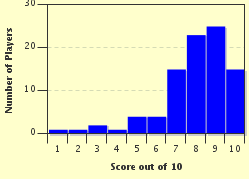Quiz Answer Key and Fun Facts
1. The first thing you may run across in the tomb are the remains of the deceased individual. How did the ancient Egyptians care for the dead as part of the burial process?
2. Next in the tomb perhaps you would stumble across some canopic jars. What was contained within these vessels?
3. Upon going through the tomb, you may notice writing on the walls and columns. It appears to be a series of pictures and symbols. What kind of alphabet did the ancient Egyptians use?
4. While in the tomb, you might also come across some food and drink! The ancient Egyptians sent off their dead with plenty of meals and refreshments to enjoy in the afterlife. What common drink, pictured here, was often poured in a container and placed near the coffin?
5. You will probably see many pieces of jewelry as it was expected that the dead should take these to not only look powerful but, in many cases, to be protected. One such symbol often found on jewelry is the one seen in the picture which is thought to protect people from harm. What is it called?
6. In the tomb you will probably also find many household items. Many everyday necessities were placed with the mummy so it may be comfortable in the afterlife. In both life and death, Egyptians used beds and pillows. Of what were these bed pillows typically made?
7. While walking through the tomb you might see, and smell, some wonderful perfumes in alabaster jars. Egypt was famous for its fine oils and many people were buried with containers of it. There was a common ingredient in most of the oils that was obtained from a resin found in the area. What is it?
8. Once you are in the tomb, you might stumble across the corpse of an animal. Why would it usually be found in there?
9. Next in the tomb you come across what looks like a board game. This is because the Egyptians believed it was important to be entertained in the afterlife. This 30 square board game with throwing pieces could be played on elaborate carved rectangles or simply drawn into the earth. What is it?
10. Finally, you interpret the warnings on the outside of the tomb entrance and on various markers within. These inscriptions were often used in ancient Egypt. What were they?
Source: Author
stephgm67
This quiz was reviewed by FunTrivia editor
bloomsby before going online.
Any errors found in FunTrivia content are routinely corrected through our feedback system.

